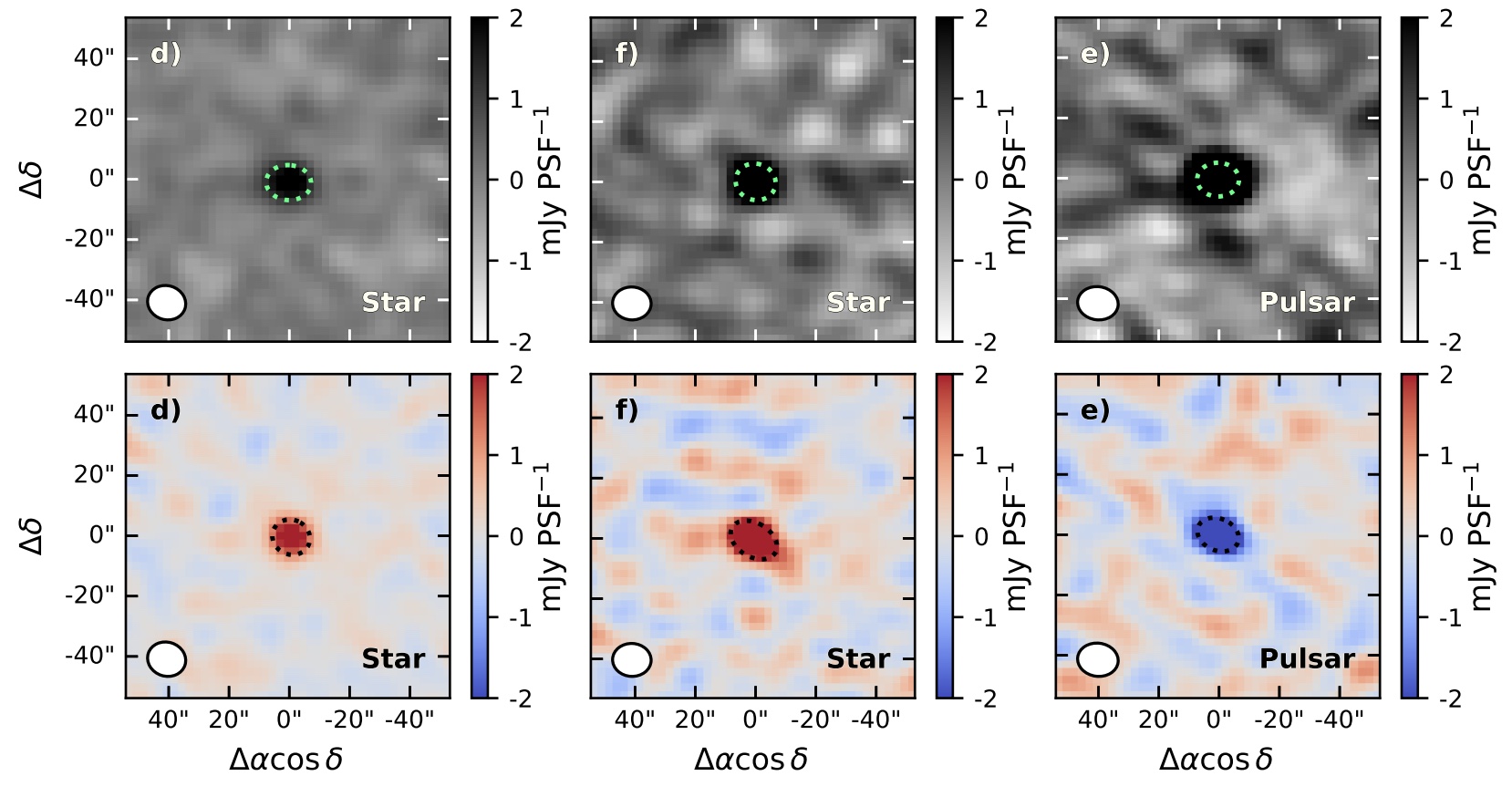| 29th of April 2024 |
|---|
 |
| Multi-epoch sampling of the radio star population with ASKAP |
| by Pritchard et al. |
|
The population of radio-loud stars has to date been studied primarily through either targeted
observations of a small number of highly active stars or widefield, single-epoch surveys that
cannot easily distinguish stellar emission from background extra-Galactic sources. As a result
it has been difficult to constrain population statistics such as the surface density and fraction
of the population producing radio emission in a particular variable or spectral class.
Pritchard et al. present a sample of 36 radio stars detected in a circular polarisation search of the
multi-epoch Variables and Slow Transients (VAST) pilot survey with ASKAP at 887.5 MHz.
Through repeat sampling of the VAST pilot survey footprint they find an upper limit to the duty
cycle of M-dwarf radio bursts of 8.5 per cent, and that at least 10±3 per cent of the population
should produce detectable radio bursts.
Based on these rates, the authors anticipate that around 200 ± 50 new radio star detections
will be made per year over the full VAST survey.
The figure above shows Stokes I (top panels) and V (bottom panels) cutouts of two identified stars (panels d and e) and a pulsar (panel f). The restoring beam is shown as the ellipse in the lower left of each panel, and green and black dotted ellipses trace the shape of the selavy source-finder components. |